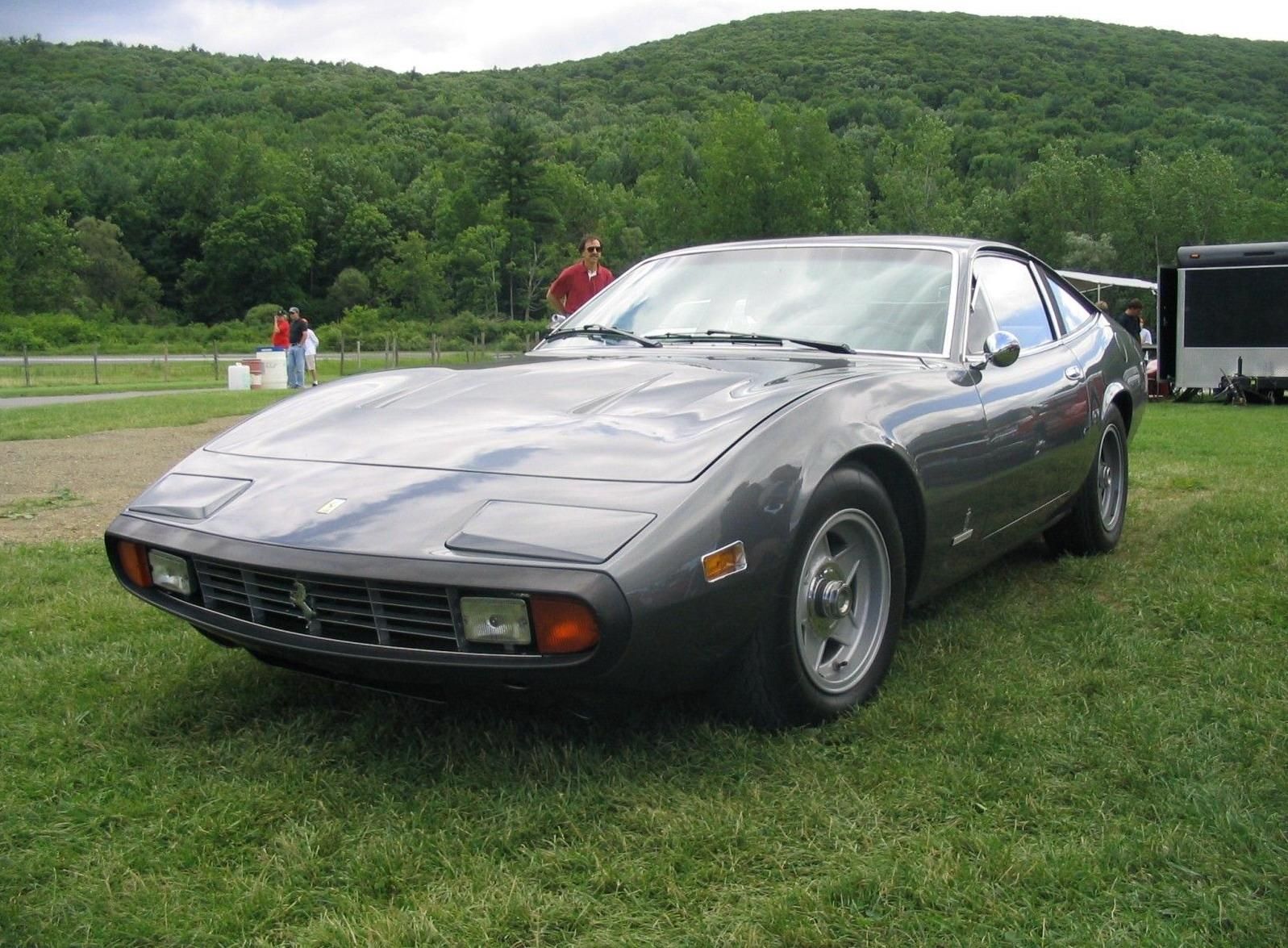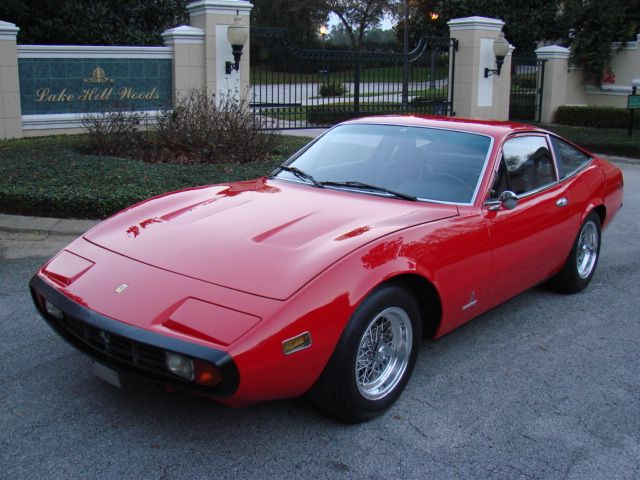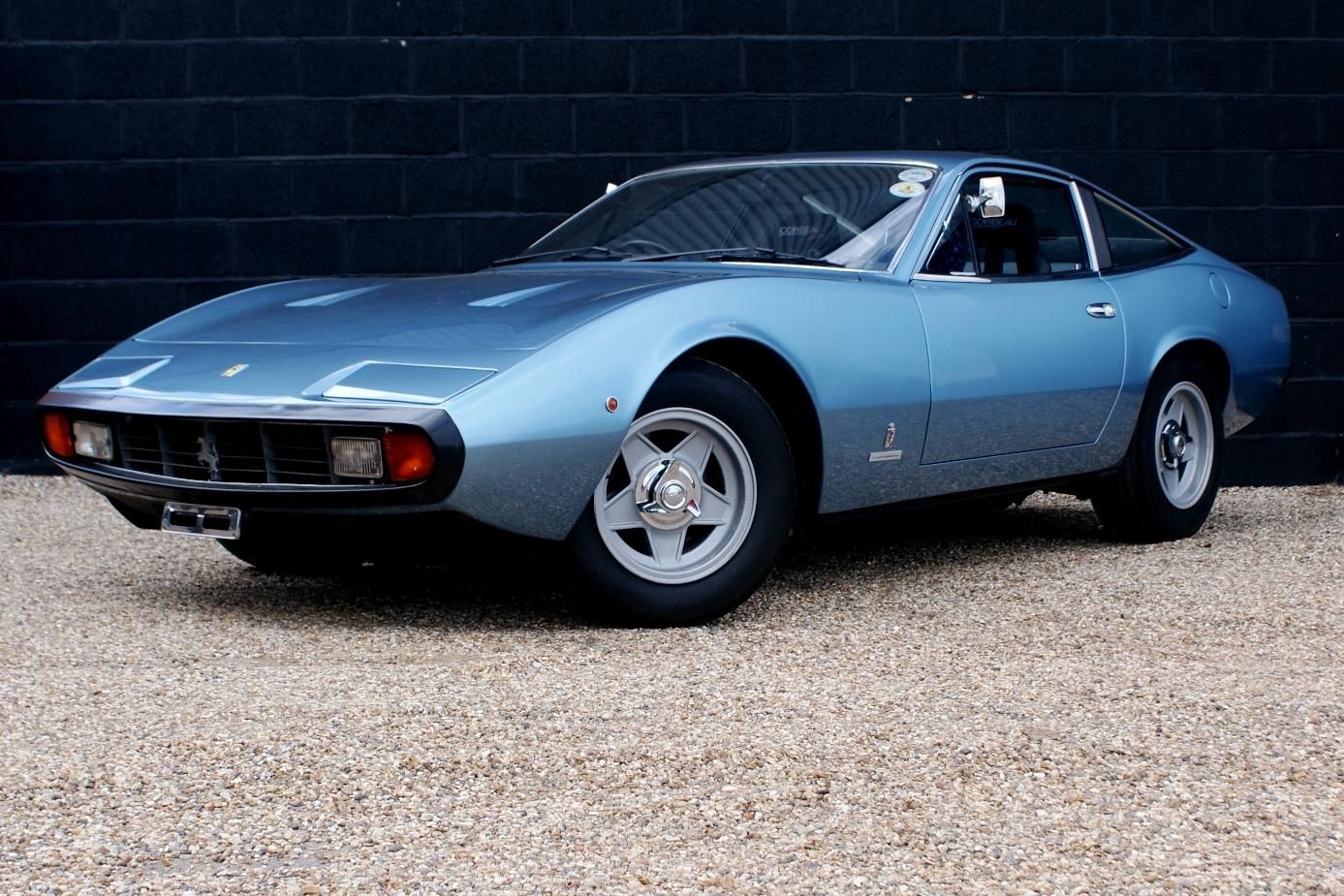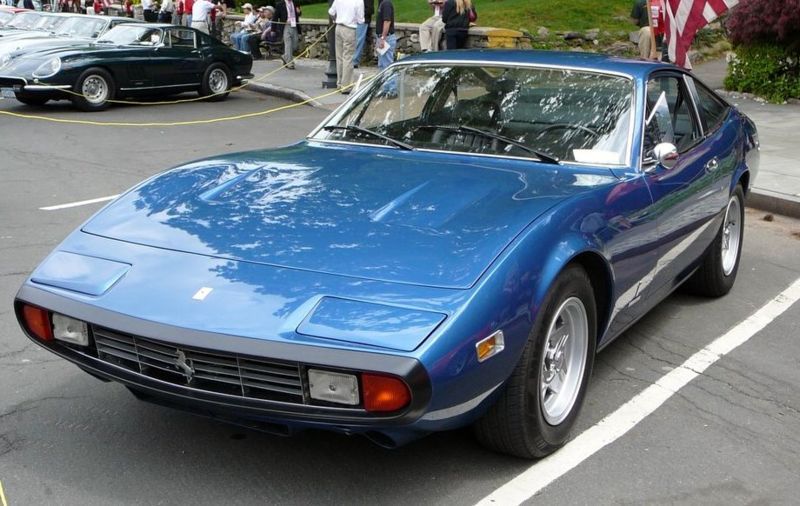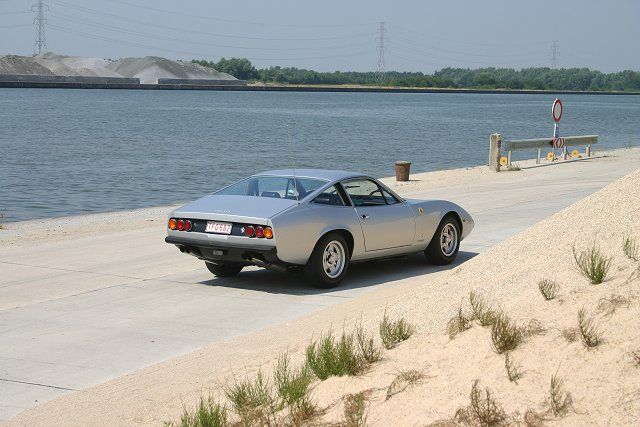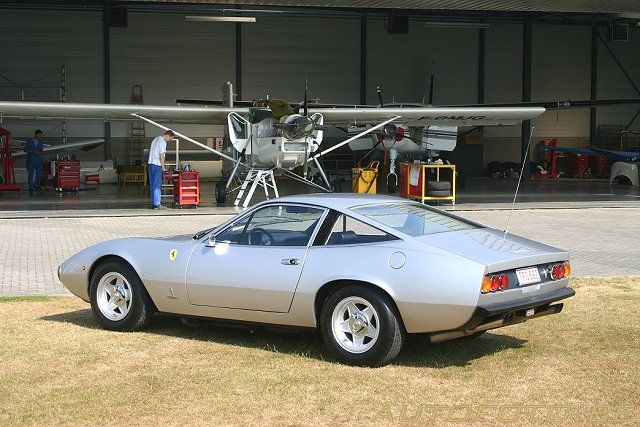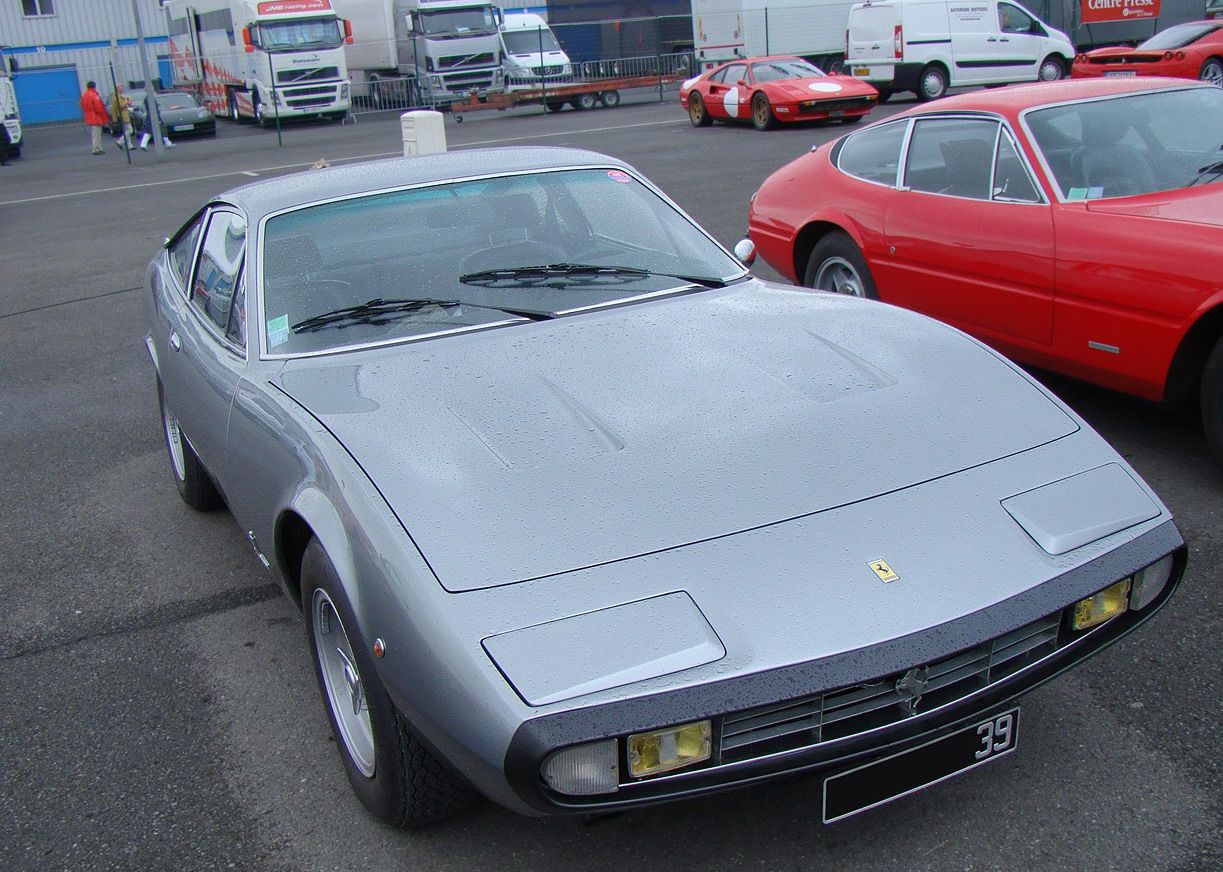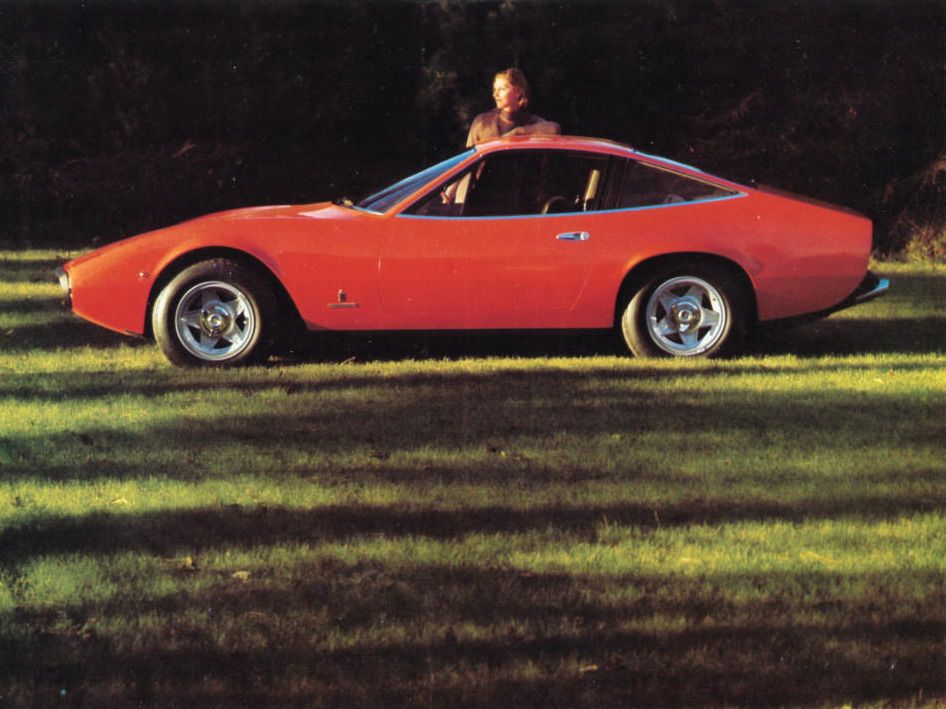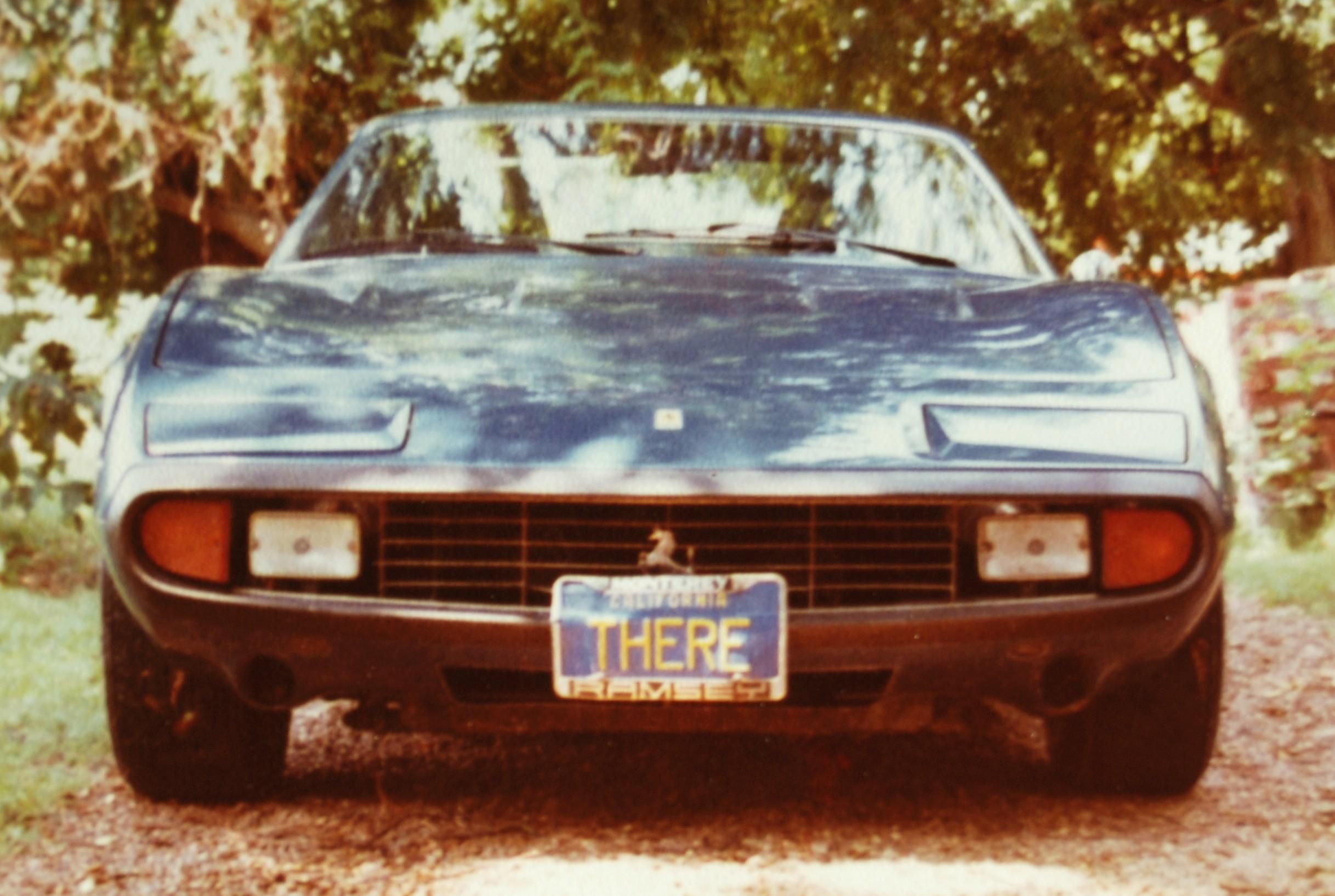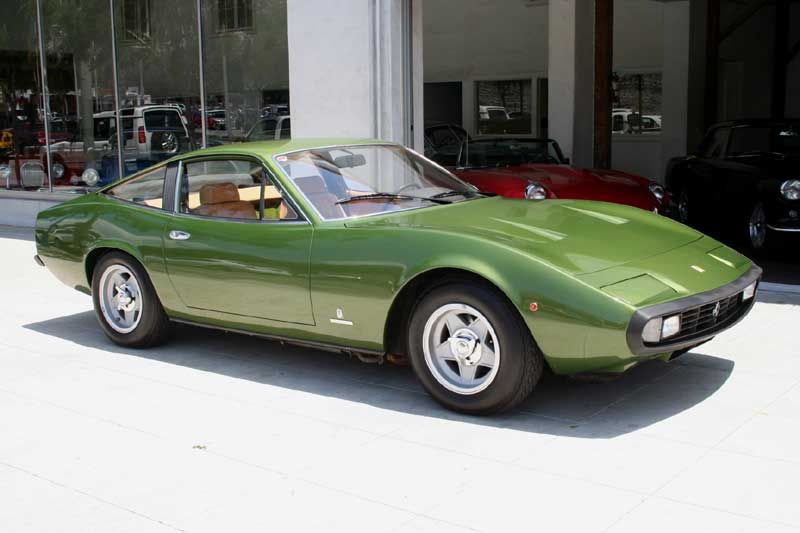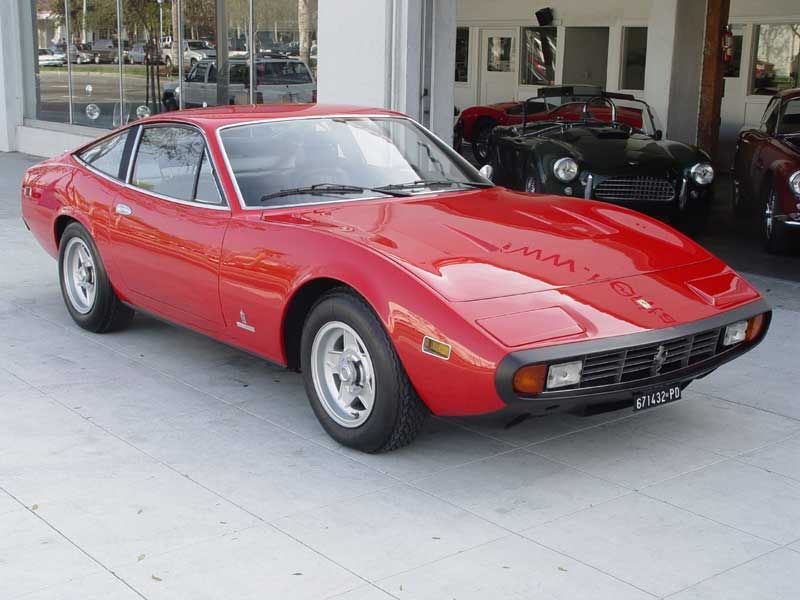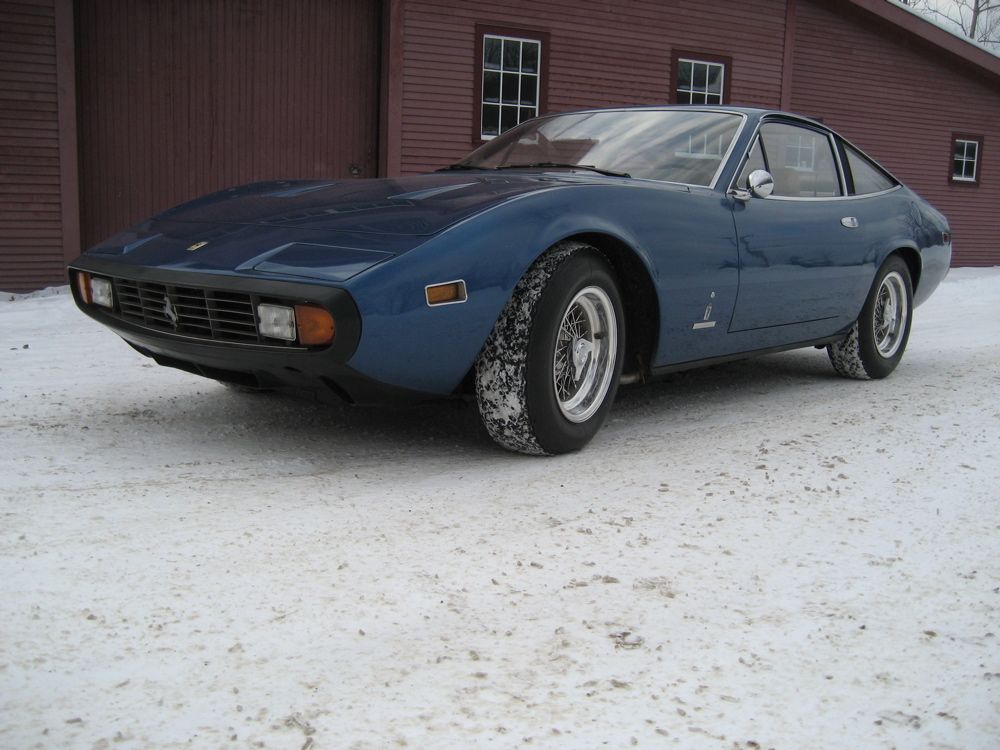In 1971, Ferrari introduced the 365 GTC4, a 2+2 grand tourer designed to replace the 365 GTC and 365 GT 2+2. Finding an appropriate middle ground between these two predecessors meant the GTC4 struck an odd balance between aggression and practicality – it came with the same quad-cam V-12 as the 365 GTB/4 Daytona, but peak output was lowered for better around-town response. The two-door exterior design promised a sporty experience, but the overall aesthetic was relatively restrained. The interior was outfitted for driver enjoyment, but came with a miniscule rear seat. Simply put, the GTC4 was a more civilized take on Prancing Horse performance, but it could still bring the heat if properly motivated.
Once considered one of the most underrated Ferraris in existence, the GTC4 now regularly commands healthy six-digit prices at auction. Chalk it up to the low production numbers and a booming interest in 12-cylinder GT Ferraris, the GTC4 remains a classic Italian sports car with a unique flair and impressive speed potential.
Continue reading to learn more about the Ferrari 365 GTC4.
1971 - 1972 Ferrari 365 GTC4
- Make: Array
- Model: 1971 - 1972 Ferrari 365 GTC4
- Segment: Array
- [do not use] Vehicle Model: Array
History And Background
Ferrari pulled the sheets on the 365 GTC4 at the 1971 Geneva International Motor Show. The model promised a healthy mix of excitement and luxury, bearing the same underpinnings as the Daytona, but with the addition of a rear seat, large trunk, power steering, and air conditioning.
The GTC4 was in production for just one year, getting the axe (some feel prematurely) in the fall of 1972. It was succeeded by the 365 GT4 2+2, which used the same drivetrain, but gained an extended wheelbase for extra comfort in the rear seat.
Exterior
Although the GTC4 looks more reserved compared to its contemporaries, its styling origins are the same as countless other Ferraris, as Pininfarina was enlisted for the design and coachwork. After spending time in Turin, the GTC4 body was sent to Modena to receive its mechanical innards from Ferrari.
The lines are discreet and elegant, offering a simplicity that flows in unbroken shapes from tip to tail. Rectangles and wedges replaced the ovals and curves of the ‘60s, with well-defined creases heralding an industry-wide turn towards sharpness and deep angles.
The front end is low and wide, with a nose that terminates in an almost rectangular intake. The grille insert uses broad slats that enhance the car’s visual width, and rather than the conventional chrome trim, there’s a matte black rubber surround for the bumper.
Rectangles are also used for the clear driving lights and turn signals, as well as the pop-up headlight housings. Turned on, the headlights flip up to reveal four circular lamps (two per side). Turned off, the housings recede back into the leading edge of the nose. Meanwhile, two squared vents were placed on top of the broad hood.
In profile, the GTC4’s sporting intentions become much clearer. The roof employs a sloping, fastback angle that concludes with the subtle suggestion of an upturn, while the windows form a slippery-looking teardrop shape. Meanwhile, the fenders and beltline create a smoothed M-shape that insistently pitches the whole thing forward.
In the rear is a curt Kammback tail, which comes studded by four rounded taillights and twin rounded turn signals. The lower bumper echoes the nose in matte black rubber.
With fewer chrome embellishments and none of the superfluous rounded lines of previous Ferrari GT cars, the GTC4 appears exacting and solid, like it was molded from a single slab of metal, eschewing any tacked-on trimmings in the process. This is repeated in the corners, where we find cast aluminum Cromodora wheels as standard. However, Borrani wire wheel were also available as an extra, and when equipped, they look strangely out of place on the otherwise uncluttered exterior.
Exterior Dimensions
|
Track (front/rear) |
1,470 MM (57.9 in)/1,470 MM (57.9 in) |
|
Wheelbase |
2,500 MM (98.4 in) |
|
Length |
4,547 MM (179 in) |
|
Width |
1,778 MM (70 in) |
|
Height |
1,267 MM (49.9 in) |
|
Ground Clearance |
119 MM (4.7 in) |
Interior
The GTC4’s cabin used a then-new design that seems to indicate the driver-centric approach taken by most modern sports cars. To begin, the instrument pod is more firmly integrated into the dash, sitting further back behind the steering wheel. The speedometer goes up to 180 mph, while the tachometer tops out at 8,000 rpm. More gauges are found in the center console, and are angled towards the driver, providing info on vitals like oil pressure, oil temperature, coolant temperature, and the like.
The shifter tunnel slants downwards from the dash, providing an easy right-hand transition from the steering wheel. The cover plate is a silver, brushed-metal look material, which many owners chose to replace with leather.
One of the most interesting features of the GTC4 is its 2+2 seating configuration, an approach that’s similar to the 365 GT 2+2. However, due to its curvaceously low roofline, the GTC4 offers very little in terms of space behind the two front seats, and more often than not, the rear bench was used for luggage space, not seating. As such, the GTC4 is considered more of a successor to the 365 GTC, which came with a true two-seater layout.
However, thanks to its rear seat, the GTC4 was far more practical, especially when taking advantage of the sizable 8.5 cubic feet of trunk space – a figure considered quite impressive for the segment.
Drivetrain
The GTC4 uses a front-engine, RWD drivetrain layout. Under the hood is the same engine block as was used in the 365 GTB/4 Daytona, but attached to it are new heads, new carburetors, and a wet sump lubrication system.
Specifically, the powerplant is the 4.4-liter Tipo 101 Colombo V-12, with aluminum used for the block and heads, plus cast iron sleeves. The cylinder banks are angled at 60 degrees, and the compression ratio is 8.8:1. There are two Marelli distributors, two chain-driven overhead camshafts per cylinder bank (quad cam), and two valves per cylinder.
Unlike the downdraft carburetors on the Daytona, the GTC4 uses six twin-choke side-draft Weber 38 DCOE carburetors, which lower the engine profile and make possible the car’s ultra-low hoodline.
Peak output is down compared to the Daytona, with a maximum 340 horsepower at 6,800 rpm and 318 pound-feet of torque at 4,000 rpm. This detune was performed in order to provide GTC4 drivers with a more manageable throttle response, which falls perfectly in line with the coupe’s more civilian attitude.
Redline is just over 7,000 rpm. Wind it out, and the GTC4’s V-12 is still considered one of the best-sounding engine notes around.
While most GTC4 models sold in the U.S., Ferrari also created a Euro-spec variant. Across the pond, customers enjoyed the full 340 horsepower. However, stateside buyers were stuck with extensive emissions controls (air injection carbon canister, new exhaust, etc.) that saw output drop to by as much as 20 ponies. U.S.-spec cars are recognizable thanks to their rectangular side markers.
Sending the muscle to the rear axle is a five-speed manual gearbox. Once again, the GTC4 diverged from the Daytona, sporting a set-up that connected directly to the engine, as opposed to the transaxle set-up found on the more famous sibling.
Despite these differences, the GTC4 was still wickedly quick – flat out, it could easily crest the 150-mph mark. More performance data can be found in the July 1972 edition of Road & Track, which lists the following performance stats:
0-to-60 mph in 7.3 seconds
0-to-100 mph in 19.3 seconds
Standing quarter mile in 15.7 seconds at 91 mph
Chassis And Handling
The GTC4 uses a welded tubular steel chassis (Tipo F101) similar to the 365 GT 2+2. The wheelbase, however, was shortened by 150 mm to make it sprightlier.
Most of the body panels were made from steel, while the trunk lid, doors and hood are aluminum.
Turning it is a standard hydraulic power-assist rack-and-pinion system from ZF.
The suspension uses an independent set-up at all four corners, and includes unequal-length A-arms with coil springs and tube shocks, plus anti-roll bars. In back are self-leveling ride height hydraulic struts.
Making it stop are vented discs front and back, measuring in at 11.3-inches in front, and 11.7-inches in the rear. According to the previously cited Road & Track review, the stopping distance is 173 feet from 60 mph, and 315 feet from 80 mph.
The car’s curb weight is rated at roughly 3,800 pounds, which is distributed 51 percent/49 percent front to rear.
Finally, the original Michelin tires were sized at 215/70R15.
Prices
Considering the GTC4’s extremely limited time in production, it should come as no surprise that just 505 units were created, making it a somewhat rare find these days.
Pricing when new was $27,500, but now, well-kept examples go for around $250,000. Find one in Concours condition, and you’re looking at a figure closer to $500,000.
If you’re interested in purchasing one, 365GTC4.com offers a detailed buyer’s guide here.
Competition
Lamborghini Jarama
|
|
right> |
Produced between 1970 and 1976, the Jarama was Lambo’s take on a 2+2 GT car. Under the hood was mounted a 3.9-liter V-12, which sent power to the rear via a five-speed manual. Only 328 units were ever created.
Read the full review here.
Maserati Ghibli
The Ghibli nameplate first appeared in 1967 when Maserati introduced its V-8-powered 2+2 grand tourer at the Turin Motor Show. Production ended in 1973, but the nameplate was resurrected several times afterwards. The original Ghibli came with a 4.7-liter engine, and was eventually offered as both a coupe and a convertible.
Read the full review here.
Conclusion
These days, it’s common to see automakers combining speed and practicality into some kind of jack-of-all-trades mash-up-mobile. The most obvious example is the modern GTC4 Lusso, a V-12-powered hatchback with AWD and a top speed in excess of 200 mph. But the genesis of that kind of combo lies in cars like original 365 GTC4, a vehicle that toed the line between velocity and civility.
While not quite as useful as it’s modern equivalent, the GTC4 still came with remarkable performance for its day. And that’s exactly as it should be – any car bearing a Prancing Horse shouldn’t cut corners when it comes to performance. As for rear passenger legroom… well, that’s a different story.


